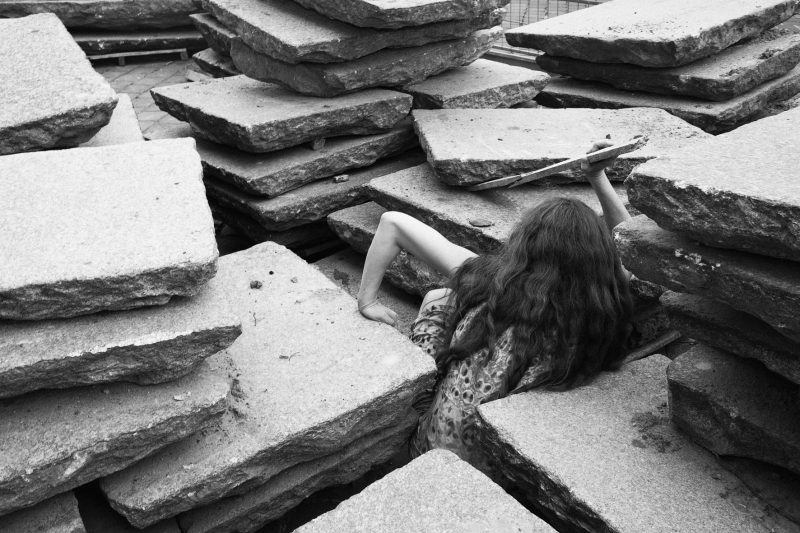New “Orchésography“*
Feet are not only for walking, that is shown everywhere by the solo dancers of the ear-catching musical theater. This jumping and rowing with the extremities and all the gymnastic fisticuffs around it – the rituals of the contortion establishment give the erotic fantasy the last rites. But there is another way.
In her “Ytong” performance, Maren Strack transforms a pair of dancing feet into instruments of block-breaking hard labor. The way the metal-shod soles are rammed into the stone is reminiscent of a form-eroding sculptural process. The hoped-for dance-like movement in space turns into a destructive treading on the spot. How does this continue? Differently, completely differently; contrast program. The revue is passé. In the ear, the sounds of footsteps and the stopping clicks of percussive tongue acrobatics increase to stone-softening intensity.
Minimalist sound also frames the mechanical ballet of a walking machine that brings seven pairs of shoes and prostheses to life. It’s an art-machine that references both the sophisticated high mechanics of the 17th and 18th centuries and the android automata of the Industrial Revolution with a shoe-plating wit. “Levers, cambrades and gears, screws and worms, ropes and pistons” Andreas Jungnickel demanded of his pupil for the Mechanica (Nuremberg, 1661) for the basic framework of the machines. E.T.A. Hoffmann also used his stylus to create his Olimpia in the story “Der Sandmann” (The Sandman), published in 1815. Maren Strack’s little machine whirrs, rattles, rattles, grinds… as if Coppola and Spalanzani, the two devil masters of the Olimpia story, had been locked up together with Fabritio Carosoda Sermoneta, the famous Venetian dance teacher, so that they could invent a machine movement sequence that would finally comply with the detailed rules of the manners books. This absurdly tacking walking machine is a reliable guide for ball-goers and ball-givers to prevent that most unseemly impression that dance students sometimes create in the act of wasting their natural grace. Finally, in her monitor quartet “Tanzstunde” Maren Strack instructs the postmodern Biedermeier in the steps of cleaning and household dance. How a social relationship of proximity and distance is characterized with the help of bell and brush shoe is truly fabulous.
*Orchésographie is the title of the famous dance textbook by Thoinot Arbeau, probably the most important dance theorist of the 16th century.
